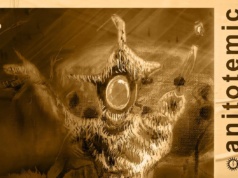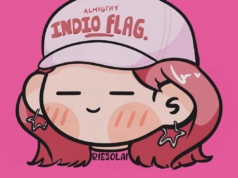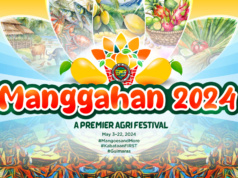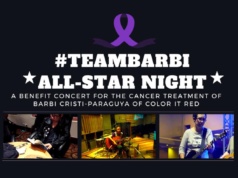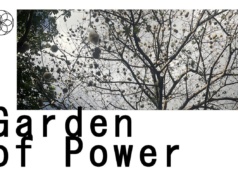Mervy Pueblo

2 December 2023 — 31 January 2024
Vernissage
2 December | 4:00 PM (PST)
Galleria Duemila
210 Loring Street, Pasay City
Warriors Wending through Waters
By Laya Boquiren Gonzales
This installation art project forges the endearing narratives of contemporary overseas Filipino workers (OFWs). The artist conversed with selected resource persons in the process of inception and production and took on the role of storyteller in the exhibition when it was first exhibited at the Nakanojo Biennale of 2023.
Mervy Pueblo reimagines the OFWs as “karakoa warriors” who fearlessly ventured into uncharted territories. In the artist’s work, each warrior’s journey is a dauntless attempt to find better opportunities for the family and community. The work is an ode to the tenacity of OFWs seeking the means to uplift the lives of loved ones and the communities they leave behind. The artist presents migrant labor with an empathic lens, creatively interpreting what she believes is the indomitable spirit of pre-colonial ancestors or early inhabitants of the archipelago.
Before colonial encounters, the inhabitants of the archipelago had a trade and communication network connecting not only islands but ridges to reefs. Boats were built as early as the 10th century for trading and raiding. In historical accounts, the caracoa or karakoa is an outrigger ship used for armed conflict and seasonal sea raids. The illustrations and renderings we find in historical essays are often grand and elaborately crafted, and we consider that such illustrations are elusive memories of early chroniclers. In historical documents, the raid or pangangayaw was done to pursue ginhawa, or the desire to secure resources. Contrary to negative connotations, raiding was a form of statecraft and expansion of territory and was part of economic and political life. The words bayani or hero are morphologically similar to bagani in the Austronesian languages, which means the absence of fear to aid communities using one’s own abilities. The concept of the bagani is also tied to the village member characterized by bravery and decisiveness, righting wrongs or performing retribution. It is also associated with the hangaway, or mangangayaw who safeguards the community by training themselves in battle and preparing to engage in raids or pangangayaw. Faith is needed to strengthen one’s innermost being or kalooban in order to offer the self to the collective. For esteemed historian Vicente Villan, the essence of being bagani can be observed among overseas Filipino workers who choose to contend with battles overseas. The warrior wends through waters, returns to the village, and brings home prestige and a sense of security, inter alia.

Karakoa Journeys: From Past to Present, celebrates the resilience and formidable spirit of Filipino migrant workers who left their families behind to pursue desired futures in foreign lands. Although their personal circumstances differ from one another and certainly differ from the pre-colonial bagani, the raison dêtre remains salient: OFWs are warriors wending through unknown waters to conquer hunger and bring home a sense of ginhawa. This sense is tangibly felt through goods that indicate economic stability.
The determination that the artist chooses to render visible recalls the spirit of ancestral leaders or pinuno, providing shelter and protection to all. The work is, therefore, one of empathy and gratitude, where Mervy amplifies the life of service rendered by overseas Filipino workers. The work is also quite personal to the artist whose mother was an OFW before migrating to the United States.
Mervy narrated her process from ideation to selection of materials for the work. She intimated that she did a “dumpster dive” during her residency in Nakanojo, in effect gathering ephemera from the place. She repurposed packaging materials of food and other commodities to create installative armor that interpret illustrations and museum photographs of protective clothing used by warriors in pre-colonial societies in the archipelago that became the Philippines. The installation also features weapons for warfare and hunting.
The artifactuality of junk embodies emotions and social relations inside homes and intimate spaces. Packaging materials and discarded readymades are used to signify the gifts sent to loved ones at home. Sending balikbayan boxes is a performance of care and serves as the prosthetic selves of the sender. Often, gifts become avatars of care, substituting for the physical presence of parents. In such scenarios, mundane goods signify affection that cannot be given because of the distance that separates the giver from the beloved. The absence grows, and the ache of longing festers like a wound until one day, gifts can no longer provide the palliative care they used to do, and we become strangers to one another. In a box sealed with layers and layers of packaging tape, we find gifts along with things unsaid, including hopes that these will speak of the affection that remains elusive.
The artist also shared that she chooses repurposed materials not because she considers herself an environmentalist but because the materiality of art is a tendency deeply rooted in her psyche. She intimated that in her formative years, she often chose to “make do” with what was available for fear of wasting materials. Personal memories made a lasting impact, and the tendency of repurposing trash to avoid wastage lingers to this day.
As part of her artistic praxis, Mervy found it an important part of the production process to interview respondents who generously shared their stories of survival and becoming. Some of the interviewees work in factories of cars and electronics in Japan. With this, the artist chooses to amplify the dignity of overseas migrant labour. Mervy wanted to present OFWs as human beings instead of being mere fodder for the economy.
She later invited the resource persons to wear her installation and strike a pose as a performative invocation of potency. Underneath their warrior garments are their factory uniforms. Like noble warriors or bagani, they gallantly face the photographic gaze and, in so doing, lend a participatory component to the installation. The work serves as a co-creation with OFWs in Japan. Mervy shared that the installation also has a trans-active potential: upon encounter, the narratives sometimes moved exhibit visitors in Japan.
The artist juxtaposed painted illustrations of images of warriors from the Boxer Codex that she herself rendered, in effect evoking deep collective memories of the survival and resilience of our ancestors and how these intangibles have prevailed in the present.
The diaspora is where warriors find themselves navigating through unknown treacherous currents. Sturdy masts and sails unfurled, they persevere, relentless in their pursuit of comfort for their loved ones or a better life that they may never have. Where OFWs are sometimes mistakenly judged as having forsaken their family ties, they bind themselves to a life of service, even ready to be estranged. They are perceived as having substantial economic mobility, yet beneath the gleam of packages is the sacrifice they endured.
Reference:
Villan, Vicente. 2021. “Buhay, Ginhawa, at Dangal: Kontekstong Pangkamalayan sa Pangangayaw at ang Pagsasakasaysayang Pilipino Hanggang sa Unang Hati ng Ika-19 na Siglo.” Nasa Pangangayaw: Ang Panginngibang Bayan at Paghahanap ng Ginhawa sa Kasaysayan at Kalinangang Pilipino, Edited by Vicente C. Villan at Kristoffer Resos Esquejo, 27-52. Lungsod Quezon: ADHIKA ng Pilipinas, Inc.; Maynila: National Commission for Culture and the Arts.
About the Artist



